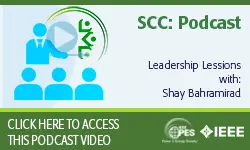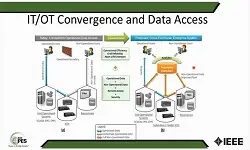Planning and Operation of the Utility of the Future
Shay Bahramirad
-
Members: FreePES
IEEE Members: $11.00
Non-members: $15.00Length: 00:42:35
01 Mar 2016
The electric grid is undergoing transformations enabled by the integration of new technologies, such as advanced communication and power electronic devices, and the increasing penetration of distributed generation. There is a declining electric load growth due to, e.g., increased energy efficiency, customer self-generation, and low natural gas prices. Small and utility-scale renewable resources, such as solar and wind distributed energy resources, batteries, plug-in electric vehicles, EV, have begun to complement large coal, gas, and oil-fired power plants. Customers require increased reliability and power quality, more energy management capabilities, and decreased electricity costs. Such changes introduce a new paradigm in the cultural infrastructure of power systems, which requires a great deal of cooperation between utilities, power generation companies, consumers, governments, and regulators. In this webinar, the process of developing transformational grid control algorithms and architectures that optimize the usage of flexible load and distributed energy resources as well as the leveraging of physical assets and communications network infrastructure to develop the utility of the future will be discussed.
Primary Committee:
IEEE Power & Energy Society Webinar Series


